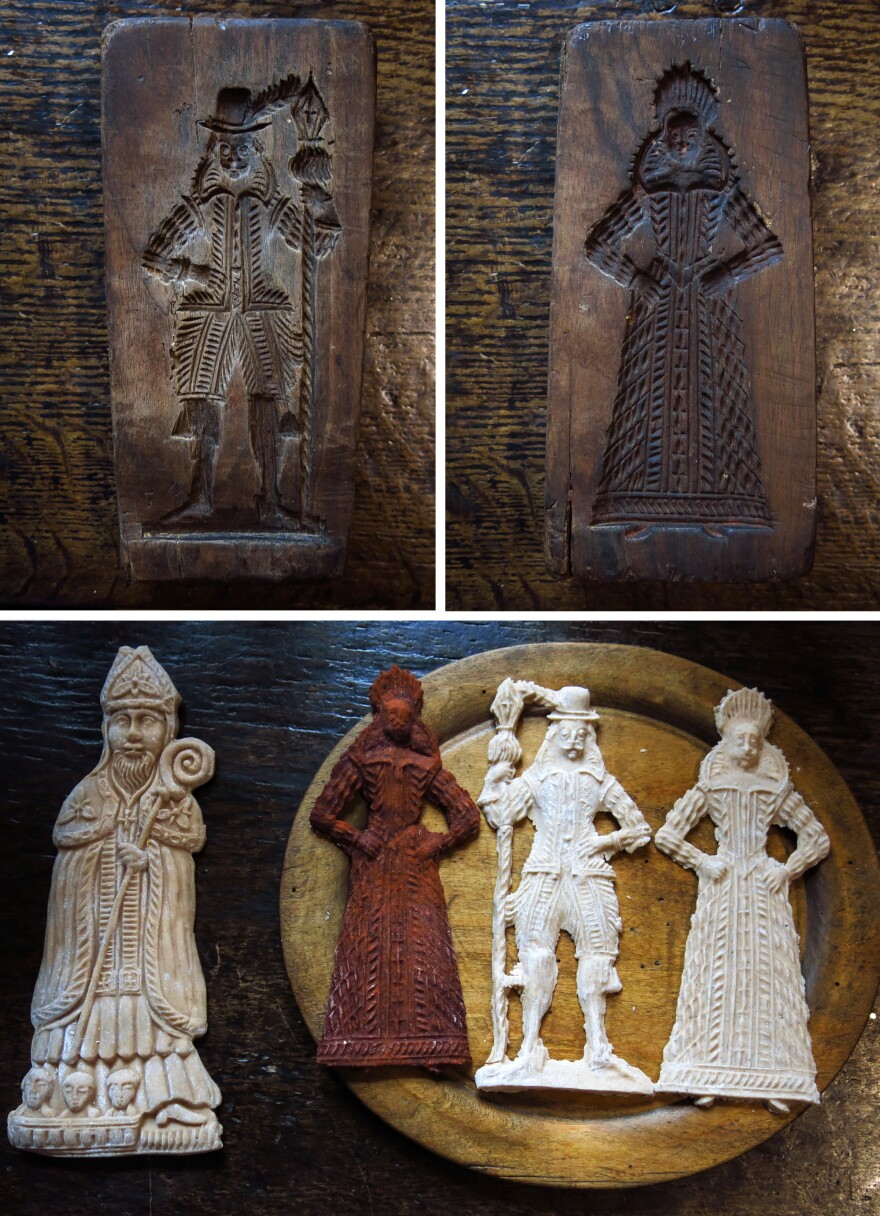If you are eating turkey this Christmas out of some sense of tradition, food historian Ivan Day says, put down that drumstick. After studying English cookbooks hundreds of years old, Day says the giant bird isn't even that traditional. Besides, he says, "It's a dry wasteland of flavorless meat."
Sure, the first turkey came to England in the 1600s. It was an exotic "treat" from the New World. But a time traveler from Shakespeare's time wouldn't understand why everyone in the modern world was having the same dull bird on Christmas night.
At his farmhouse in northern England, Day collects old cookbooks and food illustrations. He says in olden days, Christmas celebrations were all about novelty and variety. The tables of the rich might include a turkey and a goose, but also peacocks, swans, partridges and plovers. A rack of venison would sit beside a giant turtle. The eating would go on for days.

Christmas used to be a 12-day drunken festival. Imagine Mardi Gras with snow. Cooks were always trying to top one another in outrageousness, from the traditional presentation of the boar's head to the array of sickeningly sweet puddings. Day shows me a 19th-century illustration of a pie that took a crowd of servants to carry. It was filled with boned geese, woodcocks, hares and any other game they had around.
"This was the original turducken," he says.
Ivan Day doesn't just read the old cookbooks. He tries out all the dishes he finds and makes them the way history intended. Day has outfitted his farmhouse with appliances of centuries past, including a fireplace stoked with coal and a wind-up rotisserie such as 17th-century cooks might have used. Every wall holds copper pots and sugar molds and strange pastry devices.

One of his favorite discoveries in the old cookbooks was a traditional Christmas soup called plum pottage, a recipe from the 1700s. It starts with a strong beef or mutton broth. Then you add fruit juices, candied orange and lemon peels, raisins and wine. Day says it's like a liquefied Christmas pudding.
It sounds disgusting, he says. "But I have served it to Michelin-starred chefs and they have been absolutely amazed at how delicious it is."
But more than the taste, Day says you have to think of what this meant to have such a treat on an English table hundreds of years ago. England is a cold, northern country where you can't grow citrus fruits and sugar and cinnamon and nutmeg. To fill a pie or a soup bowl with meat and fruit and spices, as horrible as it might sound to many Americans, was a way of demonstrating how rich you were.
"It's the culinary equivalent of having a Maserati. It's showing off," Day says.
This sense of competition and variety disappeared from Christmas. The drunken festival was reduced to a single family holiday. Charles Dickens sealed the fate of the Christmas dinner when he had Ebenezer Scrooge call down to that young boy and had him buy the largest turkey in the window. Since then, in the U.K. and the U.S., old-timey Christmas cards feature a family gathered around a single bird, turkey or goose, surrounded by pretty bland-looking potatoes and stuffing. Not a turtle or swan in sight.
Ivan Day will be having beef roasted in front of an open fire for Christmas, and he says you really should stop and appreciate how Christmas must have felt to people, say, 400 years ago. They might have gone months eating the same thing every day, bacon and bread. The Christmas meal, with its exotic fruits and endless variety, must have felt like a miracle. "It was a moment of sunshine in a dreary year of grayness," he says.
Copyright 2021 NPR. To see more, visit https://www.npr.org.





